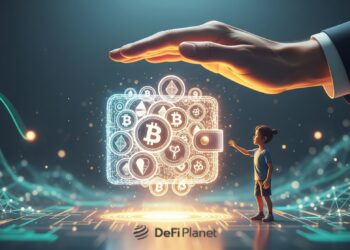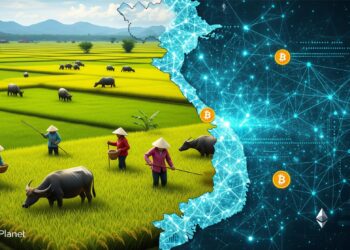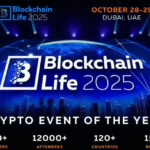Different blockchains are suffering from a lack of scalability, which limits their efficiency. Blockchain users expect transactions to be completed quickly and without error.
Transaction speed is usually slow in chains with poor scalability, and gas fees are high. Deploying a smart contract or minting an NFT on the network becomes prohibitively expensive for the average crypto enthusiast.
Scalability issues do not affect every network, particularly the newer generation of chains designed to have low transaction fees and fast transaction speeds.
Some newer generations of chains claim to have solved the scalability problems observed in older chains, such as Ethereum.
Developers use alternative chains to ensure that their decentralized apps are scalable, and in some cases, they use Ethereum and other networks to give their dApps multichain functionality.
In addition to using an inherently scalable chain, an individual can choose to use scaling solutions being developed to improve transaction speed and reduce costs on the Ethereum chain.
Many of these scaling solutions are Layer 1 and 2 scaling platforms, allowing users to benefit from high throughput and low gas fees.
This article analyzes Plasma Chain, a separate chain anchored to Ethereum, to improve scalability.
What is Scalability?
Scalability is one of the elements of the blockchain trilemma that Ethereum co-founder, Vitalik Buterin, believes every chain should solve. Scalability refers to a network’s ability to expand in tandem with increased network activity without sacrificing transaction output (throughput) and speed.
For instance, Ethereum 1.0 was not always as congested as it is now. As the network grew in popularity and more developers built decentralized apps and smart contracts, it began to show signs of congestion. Ethereum’s network did not scale as it expanded.
What is a Plasma Chain?
A Plasma chain is a separate blockchain anchored to the Ethereum mainnet that executes transactions off-chain and has its own mechanism for block validation. The Plasma Chain is a scaling architecture designed to allow the Ethereum network to efficiently cater to large data sets while improving scalability.
In August 2021, the co-founder of Ethereum, Vitalik Buterin and Joseph Poon, conceptualized the Plasma Chain. The underlying principle of the Plasma chain allows it to be utilized on Ethereum and other blockchains.
The Plasma network, as a child chain, is a smaller version of the Ethereum network that serves as the transaction chain for its parent chain, the Ethereum mainnet. It is important to note that child chains differ from side chains because the latter are responsible for their security.
As a child chain, Plasma Chain is anchored to the main chain—the Ethereum mainnet but is not independent of its parent chain. On the other hand, side chains are independent, implying that they handle their block processing and security mechanisms.
If the main chain’s security or operation is compromised, the side chain continues to function effectively. When an issue arises on the main chain, the child chain is also affected.
While the Plasma chain may benefit significantly from the Ethereum network’s security architecture, it still faces some limitations. A dispute resolution system exists; anyone can dispute transactions by submitting them to the Ethereum chain.
To arbitrate disputes that may occur, the Plasma chains utilize optimistic rollups as their fraud proofs. Optimistic rollups work based on the premise that every piece of rolled-up data is valid, ensuring that no one tries to game the system.
Ethereum’s documentation describes Plasma chains as being “built atop another blockchain (called a “root chain”). Each “child chain” extends from the root chain and is generally managed by a smart contract deployed on the parent chain.”
The Plasma contract allows users to transfer assets from the Ethereum mainnet to the Plasma chain and vice versa.
How Does the Plasma Chain Work?
As previously stated, the Plasma chain executes transactions off-chain before sending the results to the Ethereum mainnet for settlement. This is done to increase scalability and reduce gas fees.
Because Ethereum 1.0 does not have sharding capacity, many nodes are required to verify a single transaction. The concept of division of labour is almost nonexistent in the Ethereum 1.0 chain.
To function effectively, the Plasma network incorporates this concept by taking the transactions off-chain and executing them, then sending the results to the Ethereum network. This means that nodes are no longer required to verify every transaction.
Though transactions on these child chains are executed off-chain, they are not settled off-chain but on the Ethereum mainnet. This is done to reduce the security risks associated with the Plasma chain.
Ethereum’s documentation further highlights how the Plasma chain is secured and shielded from possible security attacks.
“The operator, the entity responsible for producing blocks on the plasma chain, is required to publish “state commitments” on Ethereum periodically. ”
A commitment scheme is a cryptographic technique for committing to a value or statement without revealing it to another party. Commitments are “binding” in the sense that you cannot change the value or statement once you’ve committed to it.”
Usually, state commitments are sent from the Plasma chain to the Ethereum network via Plasma contracts. They are shaped like Markle roots and “make it easier to verify that a small piece of data is part of the larger dataset.”
Individuals must be able to easily transfer their assets from the Plasma chain to the Ethereum mainnet and vice versa for the system to operate efficiently. This is where the Plasma contract, a super contract, comes into the equation.
Typically, the Ethereum-based master contract is designed to ensure the safe transfer of assets from one side to the other, not minding that the parent chain and child chain are not inherently compatible.
In Conclusion,
- Scalability refers to a network’s ability to expand in tandem with increased network activity without sacrificing transaction output (throughput) and speed.
- Plasma Chain is a scaling architecture designed to allow the Ethereum network to efficiently cater to large data sets while improving scalability.
- The Plasma chain executes transactions off-chain before sending the results to the Ethereum mainnet for settlement.
- Plasma chains, as child chains, benefit from Ethereum’s security infrastructure.
Disclaimer: This article is intended solely for informational purposes and should not be considered trading or investment advice. Nothing herein should be construed as financial, legal, or tax advice. Trading or investing in cryptocurrencies carries a considerable risk of financial loss. Always conduct due diligence.
If you would like to read more articles like this, visit DeFi Planet and follow us on Twitter, LinkedIn, Facebook, and Instagram.
“Take control of your crypto portfolio with MARKETS PRO, DeFi Planet’s suite of analytics tools.”






















